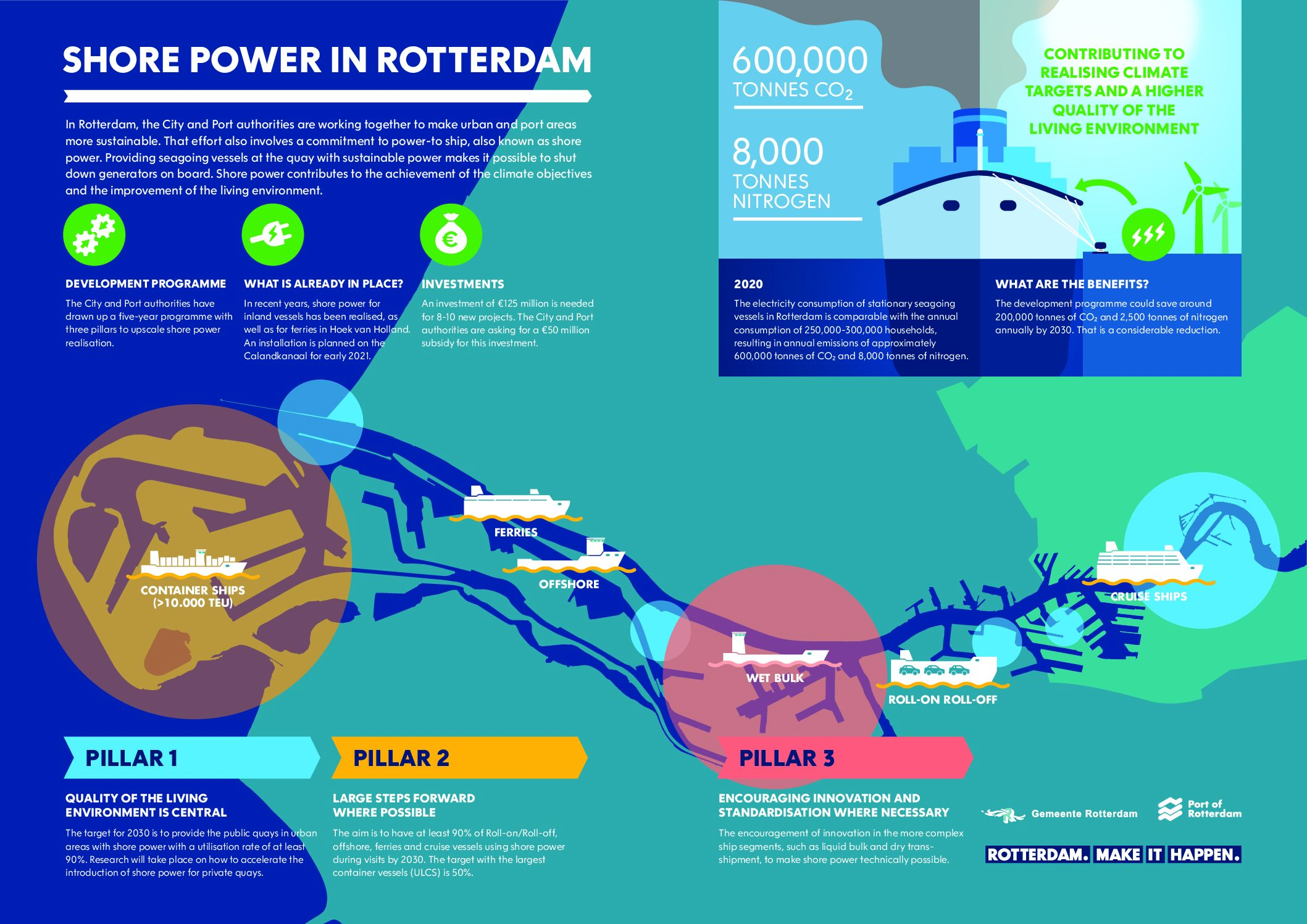Rotterdam
Rotterdam
The Municipality of Rotterdam and the Port of Rotterdam Authority are working together on the joint rollout of shore-based power for sea-going vessels in Rotterdam. By 2030, they want a significant share of sea-going vessels to ‘plug in’ once they have moored along one of the port’s quays.
Over the past few years, virtually every public berth for inland shipping in Rotterdam has been fitted with a shore-based power point. Inland vessels consume far less power than their sea-going counterparts. To limit nuisance for the surrounding area, Stena Line’s ferry at Hoek van Holland has been using shore-based power for some time now. And Eneco and the Port Authority are currently working on a shore-based power facility near Rozenburg for Heerema’s offshore vessels, which regularly moor at this location.
In view of the variety of vessel types and mooring locations involved, the partners have based their shore-based strategy on three different pillars. The first pillar mainly centres on the quality of the surrounding social environment, ensuring that all public quays in built-up areas will ultimately be fitted with shore-based power points. The second pillar is characterised by ‘big steps forward wherever possible’. The objective is to construct new shore-based power capacity for ferries, ro/ro ships, offshore vessels and cruise liners. And finally, the third pillar focuses on the development of innovations for special vessel categories like e.g. liquid bulk carriers, which are difficult to accommodate with the existing shore-based power facilities.
A summary on Port of Rotterdam’s Strategy for Shore Power can be found here
Contacts:
Floor Schipper – Shore power program manager
FH.Schipper@portofrotterdam.com
Jarl Schoemaker – Shore power program team and WPCAP WG3 team member
jt.schoemaker@portofrotterdam.com
